Home » Tire Patches vs. Tire Plugs: Which Is Better?
What are tire patches and tire plugs? Well, they are useful when you get a flat tire. In such cases, there’s a good chance that a minor repair can get you back up and running again quickly.
Three of the most common of these “minor repairs” are:
The first option, a tire plug, is cheap and fast to administer. Plugs work best when you’ve run over a nail or similar blunt object that punctures the tire and causes it to leak air. After the nail or sharp object is removed, the plug can be inserted into the hole to fix the leak. While plugs of the old days were problematic and served more as a band-aid type of repair than anything else, many plugs available today actually vulcanize to the tire to provide better stability.
Tire patchA patch, on the other hand, is considered to be a better quality tire repair. However, it’s a bit more laborious of a repair than a plug. Patching a tire actually consists of removing the tire from the rim and then using a die grinder to clean up a 2-inch diameter around the puncture to give the patch enough of an area to bond with. The patch is then pushed from inside the tire through the outside of the tire, sealed, and let dry.
The best modern tire repair solution is a plug/patch combo product. This is one piece and it combines the best benefits of both options.
Keep in mind that not all tire damage can be repaired. For example, tire bubbles are a dangerous problem that will result in needing new tires.
The question is: Can or should you repair a tire on your own?
If you purchased your tires from a mechanic or tire-specific business, then chances are they will either plug or patch your tire for free if it develops a leak and a patch or plug can resolve the issue.
Tire plugMany tire-specific businesses will also fix your tire via these means as a way of developing goodwill with you, the customer, so that when it comes to buying new tires you’ll consider purchasing that next set from them.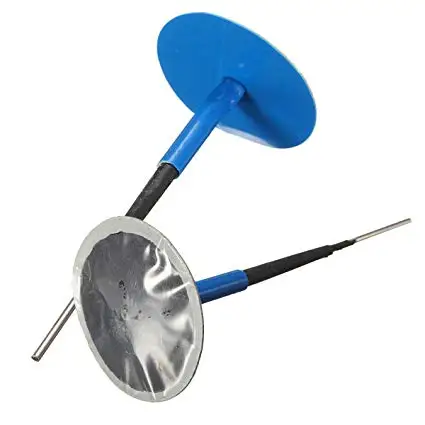
However, outside of these two scenarios, tire patching and plugging aren’t necessarily expensive (usually only $10-$20 a repair), but more of an inconvenience.
Considering this, patching your tires on your own might not be worth it.
DIY patching or plugging is still an option, yet we’d advise you to be absolutely sure of what you’re doing before going the patching route.
The plugging route is fairly simple (and cheap, as plug kits can be purchased for just a few dollars), as all you really need to do is locate the hole and insert the plug. Going the patching route is also fairly inexpensive, but there’s a lot more involved.
For instance, patching a tire consists of:
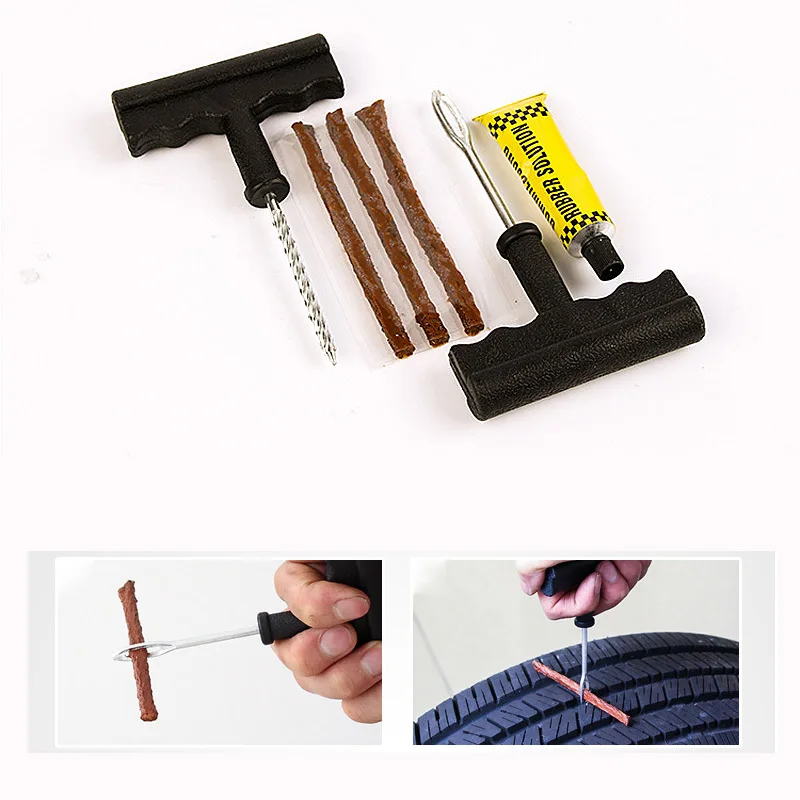
Plugs won’t usually work when a puncture is near the sidewall, as it likely won’t be able to completely seal the area. Plugs are also ineffective when the puncture is on an angle. Patches are usually the better-recommended option, but they do have their limitations. For instance, if a puncture is greater than a quarter-inch in diameter, a patch will likely be ineffective and the tire may be too damaged to repair.
What’s better – tire plugs or tire patches?Plugs, when installed correctly and in the right situations, can help a tire last for up to 25,000 additional miles. But while plugs can be effective, usually patches are considered to be the better, more secure option of the two. The patch/plug combo is the safest and most reliable option.
But while plugs can be effective, usually patches are considered to be the better, more secure option of the two. The patch/plug combo is the safest and most reliable option.
Yes and no. Years ago they were and if they aren’t installed correctly or in the right situations today, they still are. However, today’s plugs vulcanize to the tire and can help it last for tens of thousands of miles more.
Tire plug vs. patch – what is the best way to fix a damaged tire? Why is it preferable to repair or replace a broken tire rather than plug it?
A tire plug is a piece of leather coated with a rubber compound placed into the hole and plugs on the inside of the tire. A patch is a strip of rubber with a sticky back that is placed on the damaged part of the tire to prevent air from escaping.
Running over a nail with a perfect tire can be a frustrating experience, but it's all too common. In situations like this, how should the tire be repaired? Installing a plug, it turns out, can have a significant impact on the integrity and life of your tire. That is, assuming it is even safe to plug your tire. On the other hand, patching is too time-consuming and intricate for an operation as simple as a minor nail hole.
In situations like this, how should the tire be repaired? Installing a plug, it turns out, can have a significant impact on the integrity and life of your tire. That is, assuming it is even safe to plug your tire. On the other hand, patching is too time-consuming and intricate for an operation as simple as a minor nail hole.
Having dealt with many flats in our years of driving, we have gone through the same problems and are here to guide you through this predicament of having to choose between a tire plug or tire patch. So, let's get started.
You should consider plugging your tire only under certain circumstances. When it comes to plugging a tire, the first thing you should think about is if it's even safe to do so. Depending on the tread on your tire, the degree of damage, and the size of the puncture, you may not be able to patch your tire with a plug. The punctured hole must be no bigger than 0.25 inches in diameter and must be positioned on your tire's tread.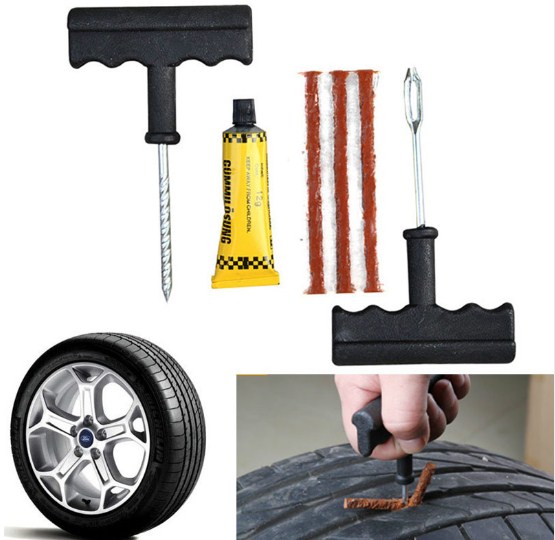 You'll need to replace the tire if the hole is on the sidewall or shoulder.
You'll need to replace the tire if the hole is on the sidewall or shoulder.
The direction of the puncture also has a significant impact on the plug's effectiveness. The nail or anything that punctured your tire generally goes straight in. A quick repair would be the right way to go in this situation. On the other hand, if the tire gets punctured at an angle, it may be a struggle to properly seal the perforated area with a plug. You should take note of the type of screw or nail and the angle at which it penetrated the tire.
Another factor to consider while plugging is the age and quality of the tire. If your tire's tread is worn down to 2/32 of an inch or less, it's too far gone to be filled with plugging. You can use the classic penny test to measure the tread. If your tire doesn't pass the test, you should get a new one.
When it comes to your vehicle's safety, it's better to leave it to the professionals. If you have your tire fixed by a licensed technician, you can be assured that the job will be done correctly.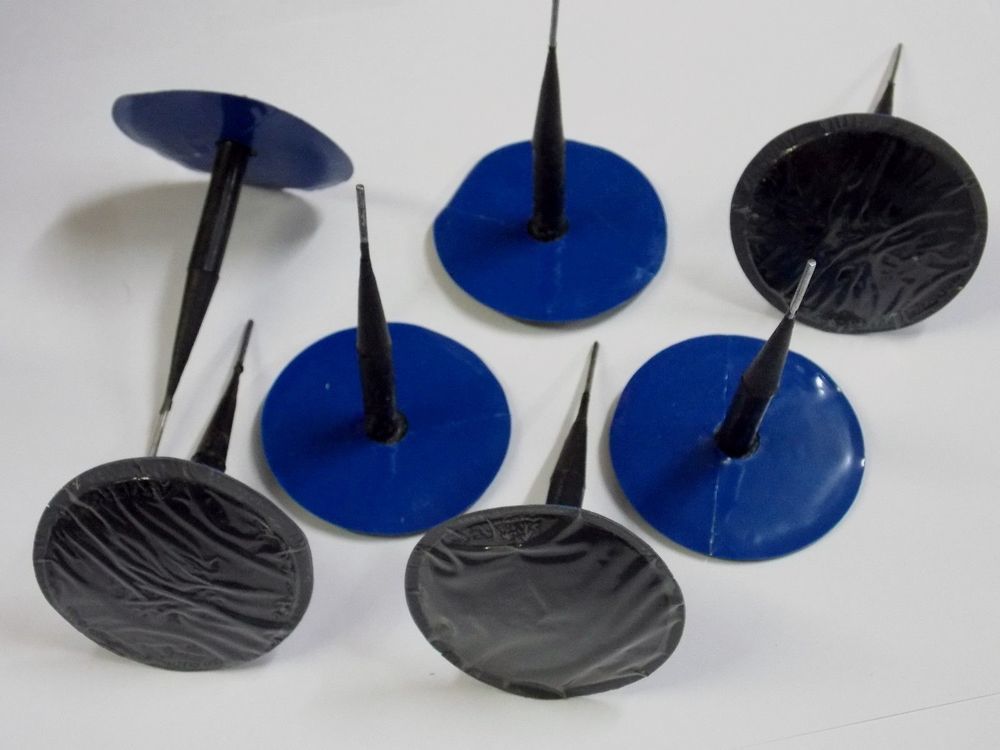
The most serious issue with driving on a plugged tire is that it still has a hole in it! While this may be a workaround, it's vital to remember that your tire still has a structural problem that needs to be addressed.
It seems to reason that a blocked tire will not be able to withstand the same amount of stress and strain as a tire in optimum condition. This is especially true when driving on the highway at higher speeds. Once a tire has been fixed, the manufacturer will no longer maintain its speed rating. A blocked tire will not work if you plan on racing, off-roading, or just want to speed up.
The minor puncture will likely get larger over time. As a result, you'll lose more air, and your vehicle will be prone to a blowout on the road. Furthermore, the plug could fail while you're driving, leaving you right back where you started.
The best way to fix a damaged tire or a flat tire is to replace it.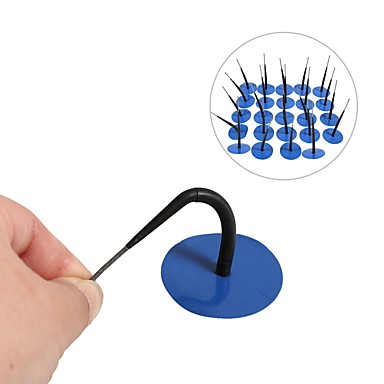 A tire patch or plug may offer a temporary solution to the problem, but keep in mind that a plug is only supposed to be a temporary remedy.
A tire patch or plug may offer a temporary solution to the problem, but keep in mind that a plug is only supposed to be a temporary remedy.
While it may be appealing to test how far a five-dollar repair will get you, the implications of a plugged tire failing are considerably worse than if the tire had been replaced in the first place.
A tire plug is made of pliable rubber that expands when fitted into a puncture and prevents air from escaping. Tire plugging should only be used as a temporary remedy for a damaged tire, not as a long-term solution for tire repair. A tire plug is a greasy, expanding device that is inserted into the damaged portion of the tire from the outside and adjusted until no air leaks out. Although the leak may have stopped, it's tempting to assume that the tire has been mended and is ready to go; nevertheless, this is not the case.
Plugs are the best option when you run over a nail or other blunt object that punctures the tire and causes it to leak air. The plug can be put into the hole after the nail or sharp object has been removed to stop the leak. While earlier plugs were difficult and more of a band-aid kind of repair, many modern plugs actually vulcanize to the tire to provide superior stability.
The plug can be put into the hole after the nail or sharp object has been removed to stop the leak. While earlier plugs were difficult and more of a band-aid kind of repair, many modern plugs actually vulcanize to the tire to provide superior stability.
Tire plugs are easy to install and are super inexpensive. However, a plug is very much capable of failing, which is never a good thing. Most plug failures are caused by holes that are too large for the plug or are otherwise irregularly shaped, in which case the damage should have rather been repaired.
A patched tire is one that has had a patch sealant placed to the exterior of the tire where the leak is. A properly patched tire should, for the most part, allow you to drive safely for an extended period of time. This is a far more powerful and successful method of fixing a tire.
Patch repairs take longer and cost more since they are usually done by professional technicians who have the equipment to detach and remount the tire.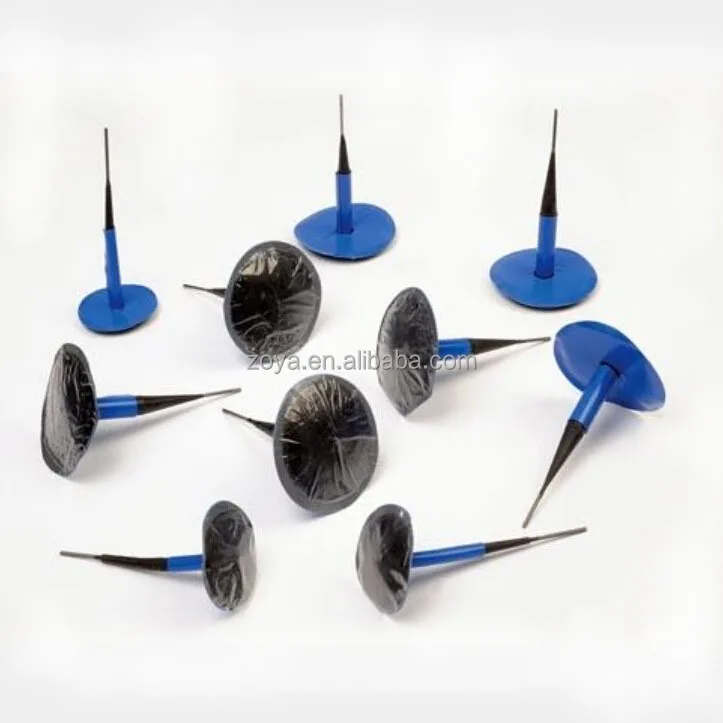 However, patching is not necessary for minor holes that can simply be sealed.
However, patching is not necessary for minor holes that can simply be sealed.
A patch is thought to be a higher-quality tire repair. It is, however, a more time-consuming repair than a plug. The patch is then moved from the interior of the tire to the outside, sealed, and left to dry.
A plug/patch combination product is the greatest modern tire repair solution. This is a single component that incorporates the greatest features of both alternatives.
Keep in mind that you should never use a plug or a patch to fix any damage that is within an inch of either sidewall. When the tire is rolling, the sidewall and shoulder portions flex too much, causing any repairs to come loose, resulting in an unanticipated and catastrophic loss of air while driving and eventually a crash or blowout.
Another consideration is that if the tire has been under low pressure for more than a few hundred yards, the sidewalls are likely to be damaged.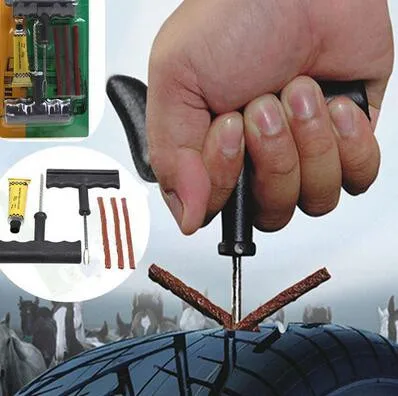 The sidewalls of a tire begin to collapse when it loses air. The sidewalls will start to collapse and sooner or later rub and fold over against each other. The rubber liner will be scrubbed from the inside of the sidewalls until the sidewall is irreparably destroyed.
The sidewalls of a tire begin to collapse when it loses air. The sidewalls will start to collapse and sooner or later rub and fold over against each other. The rubber liner will be scrubbed from the inside of the sidewalls until the sidewall is irreparably destroyed.
If you see a "stripe" of wear circling the sidewall of the tire that is softer to the touch than the rest of the sidewall, or if you remove the tire and find large amounts of "rubber dust" inside – do not repair or put air pressure into the tire because it is extremely dangerous. Instead, go ahead and get a new tire.
This helpful tire repair guide describes the basic repair methods for a punctured tyre, tires that cannot be repaired, and problems that can lead to a puncture. There are several repair options available when you hit a nail or other debris that punctures your tire.
A specialist workshop must have everything for tire repair in its arsenal.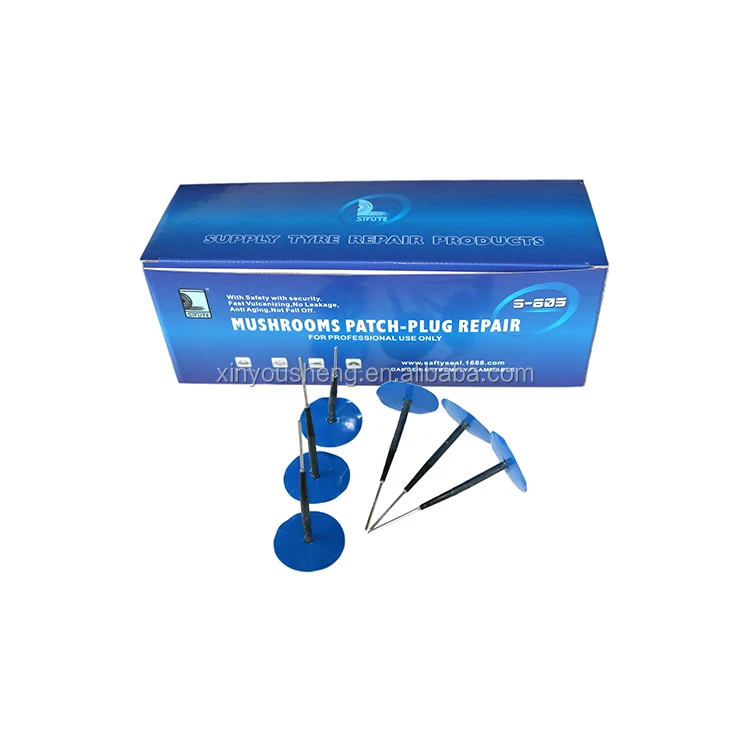 The quality of the tire repair performed will depend on the quality of the consumables available. For high-quality tire repair, you will need high-quality REMA TIP TOP materials. Everything for repairing REMA TIP TOP tires can be bought on the website https://fenix-market.com/ru/ of the Phoenix-Market company. Over the years of successful activity, Phoenix-Market has established itself in the car service market as a reliable supplier of equipment for service stations and tire fitting, as well as tire repair materials.
The quality of the tire repair performed will depend on the quality of the consumables available. For high-quality tire repair, you will need high-quality REMA TIP TOP materials. Everything for repairing REMA TIP TOP tires can be bought on the website https://fenix-market.com/ru/ of the Phoenix-Market company. Over the years of successful activity, Phoenix-Market has established itself in the car service market as a reliable supplier of equipment for service stations and tire fitting, as well as tire repair materials.
repair, and problems that can lead to a tire puncture.
Tire Repair Options
There are several tire repair options when you hit a nail or other debris that punctures your tire. While all of these repairs cover a puncture, they are not equal in quality, safety, or durability.
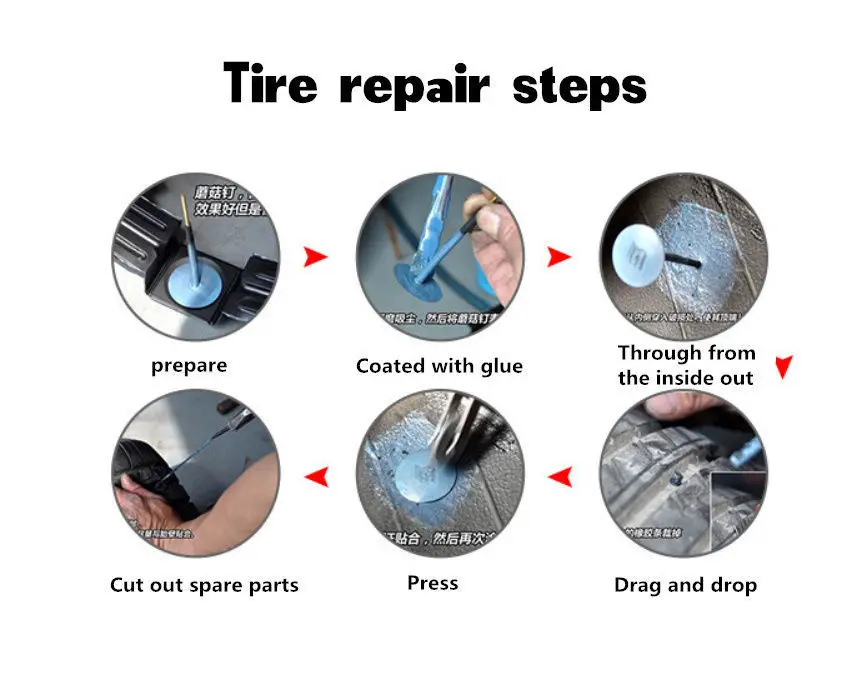 It involves injecting pressurized sealant through the valve stem - just like inflating tires - and allowing the sealant to fill the puncture. Some sealants even have enough bottle pressure to inflate a tire. There are also tire repair kits that include sealant, a portable pump, and other useful tire repair tools. Some new cars even include these kits instead of a spare tire.
It involves injecting pressurized sealant through the valve stem - just like inflating tires - and allowing the sealant to fill the puncture. Some sealants even have enough bottle pressure to inflate a tire. There are also tire repair kits that include sealant, a portable pump, and other useful tire repair tools. Some new cars even include these kits instead of a spare tire. Tire Sealants are for emergency use only and should never be considered a permanent repair. After sealing the tire, immediately go to a repair shop to have the tire inspected and properly repaired or replaced.
When you get to the tire shop, be sure to tell the technician that there is sealant in the tire. Without this warning, the technician could end up with a huge amount of sealant on the floor.
 Then you place the string in a cork tool - a large needle tool - and push it through the hole. Finally, pull out the plug tool slightly—just enough to free it from the plug—and remove the plug tool from the plug, leaving the plug behind.
Then you place the string in a cork tool - a large needle tool - and push it through the hole. Finally, pull out the plug tool slightly—just enough to free it from the plug—and remove the plug tool from the plug, leaving the plug behind. As soon as you drive the car, the heat vulcanizes the rubber and seals the hole. A busbar has several advantages. Firstly, this is a quick repair that does not require dismantling the tires from the wheels. It's also generally cheaper and you can do it yourself in a pinch.
However, a tire plug is not a permanent repair. Plugs are for temporary use only because they tend to leak and can slowly come out of the hole at high speeds. Also, plugs can allow water to seep in and cause rust on the wheels and steel bands that hold the tire in place.
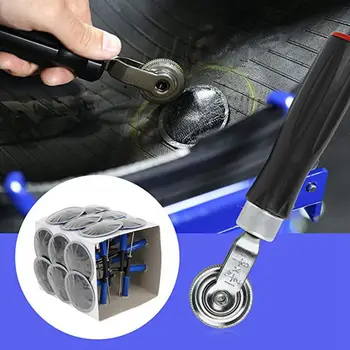 The technician then glues the patch over the puncture, smooths it out with a small roller, and applies the sealant. Due to the self-vulcanizing properties of the tire patch, it will permanently attach to the tire once it has warmed up under normal driving.
The technician then glues the patch over the puncture, smooths it out with a small roller, and applies the sealant. Due to the self-vulcanizing properties of the tire patch, it will permanently attach to the tire once it has warmed up under normal driving. A tire patch is better than a plug because there is no risk of it flying out at high speed. In addition, it creates a more secure seal as it closes the hole and its surroundings. However, patches tend to be more expensive because they take more time and require the technician to balance the tire. The standard patch also does not fill the puncture, which can lead to leakage in the future.
Not every tire puncture can be repaired - patches and plugs have their own design limitations. Here are a few cases where a tire is simply beyond repair.
Large punctures
Regardless of which type of tire fitting you choose - plug or patch - the maximum diameter of a puncture that you can safely repair is 6 mm. Anything larger can cause a leak, which could lead to bigger problems down the road.
Shoulder punctures
All tires have two main tread sections. The tire contact patch is the most central part of the tread between the outer tread channels - circumferential grooves in the tires. The shoulder of a tire is the area between the outermost channels and each sidewall.
The shoulders of the bar not only carry a large load, but also have a slight bend, which makes them unsuitable for patches or plugs. If you have a puncture in your shoulder, the tire is beyond repair, so a new tire is your only option.
Sidewall punctures
The sidewall of a tire—the vertical surface on each side of the tire—is not stiff enough to support a plug or patch. This section flexes and flexes to improve comfort and handling, but this flexing will cause any patch or plug to come loose. For this reason, sidewall punctures cannot be repaired.
Tires with insufficient tread depth
Although you can repair a tire with almost any tread depth, liability is an issue that most auto repair shops take seriously. If they repair a tire with a tread depth of less than 1.6mm and your tire blows out the next day due to low tread, the repair shop could be held liable. Thus, many car services in such cases recommend a new tire.
If they repair a tire with a tread depth of less than 1.6mm and your tire blows out the next day due to low tread, the repair shop could be held liable. Thus, many car services in such cases recommend a new tire.
Special Purpose Tires
While a tire patch works great on most tyres, even winter and high speed tyres, special purpose tires cannot be repaired. These include special racing tires or drag slicks.
Author: Kirill Savchenko
“Chief, you've got ten minutes of work to do, the hole is nothing! Well, come up with something .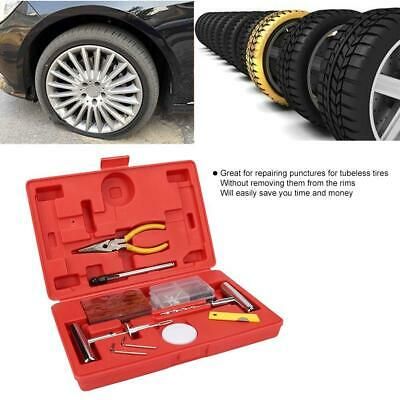 .. ”Every tire fitter has probably heard such words. Alas, not all tire damage can be repaired...
.. ”Every tire fitter has probably heard such words. Alas, not all tire damage can be repaired...
But the situation can be reversed. A wheel pierced by protruding reinforcement may be repairable, while a small cut will write off the tire for scrap. Experienced tire fitters believe that it all depends on the point of damage and the object that caused it.
Most often, drivers encounter punctures in the tread area of a tire. It is not always possible to detect it immediately. If in the days of tires and chambers the wheel lost pressure at the slightest puncture, then tubeless tires are much more reliable in this regard. A nail or self-tapping screw usually closes the puncture site, preventing air from escaping quickly.
With such a "plug" you can sometimes drive for months. The tire can lose pressure minimally without arousing suspicion. At the same time, an attempt to pull out a noticed nail on the way is likely to turn into a problem. In this case, the only recommendation is to pull out a foreign object only in a tire shop and repair the wheel.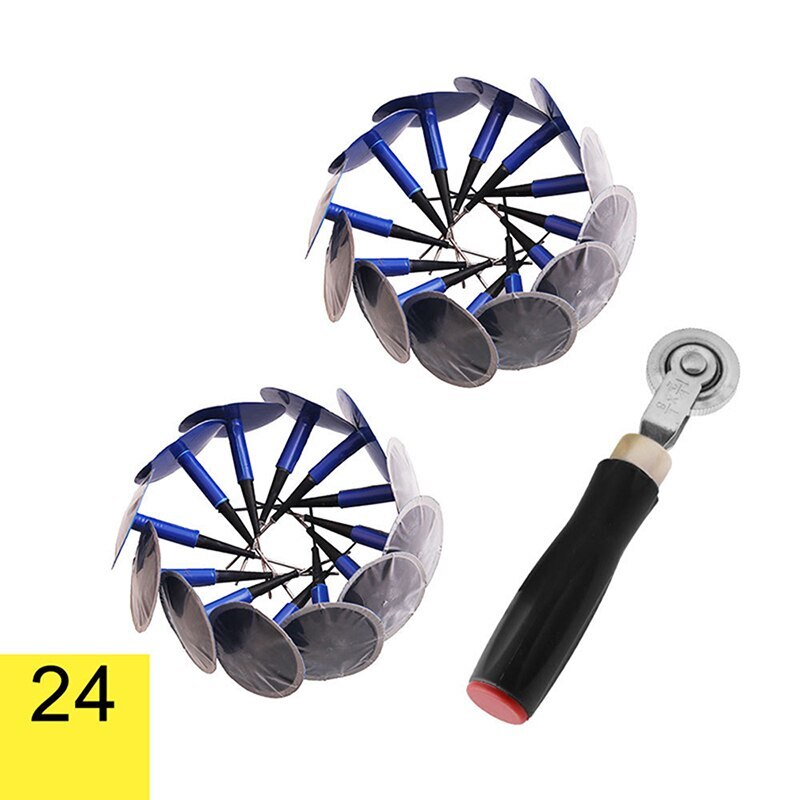
In most cases, tread punctures are repaired either with special harnesses (some for temporary use, some for permanent use) or patches on the inside of the tire. Even damage caused by massive pins can be repaired. The main thing is that a piece of the tire along with the cord is not torn out.
In the latter case, the hole is filled with raw rubber, vulcanized, and a special cord patch is placed on the inside. But this will only be a temporary measure. In addition, such repairs are not cheap, and purchasing a new tire can be both more profitable and safer.
In addition to the plaster, cord “fungi” are also used. Lubricated with glue, the “fungus” is inserted into the puncture from the inside of the tire, then the excess part of the “leg” is cut off from the outside.
On the other hand, a cord patch can seriously help with side cuts. And car owners meet with them quite often. But here there are several nuances. In a roadside tire shop, the cut will most likely not heal.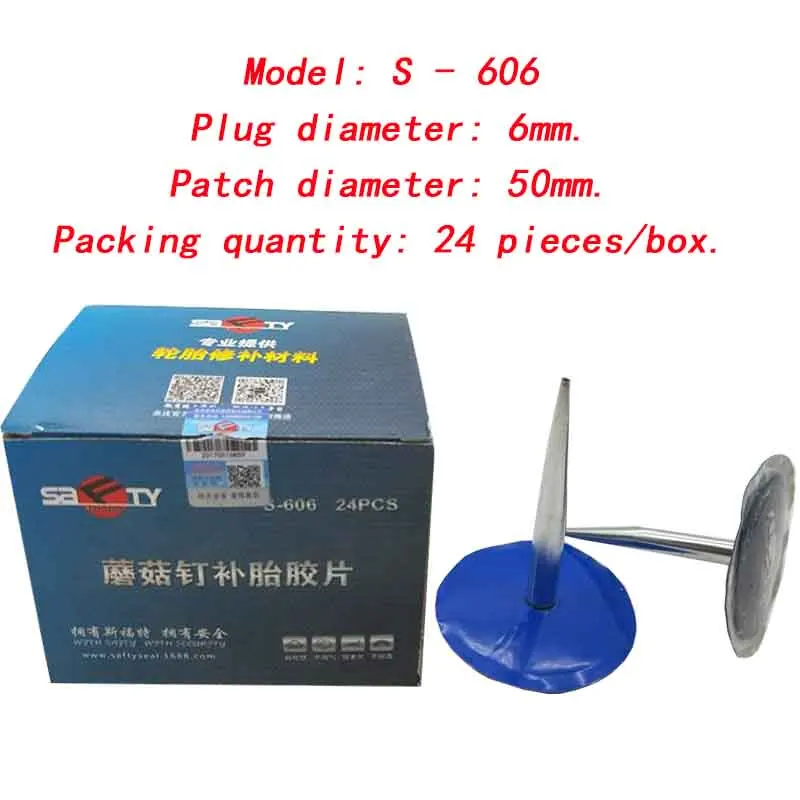 You need to contact a company with specialized equipment, primarily vulcanization.
You need to contact a company with specialized equipment, primarily vulcanization.
And one vulcanizer is indispensable here. Cord patches should be with a certain number of layers, designed for strictly defined damage sites and of a suitable size. And again we are talking about the nuances.
If the cut is in the shoulder area of the tire, then it is most often impossible to repair it qualitatively. The tire fitter who offered such a service is at great risk, even if he claims that he will weave a piece of new cord with his hands and vulcanize it. There are no miracles in this situation, but in any case, the last word belongs to an experienced specialist.
Side cuts on low profile tires with a tread height of less than 50% of the width are poorly treated. That is why, in the case of using a car on roads with a possibility of tire damage, it is better to put those that are higher. They are much easier and cheaper to repair.
By the way, an injury that looks like a cut at first glance may not be one. If the sidewall of the wheel catches on something sharp, and a tear forms on the tire without damaging the cord, then this is called a pinch. It does not carry momentary danger and does not require any complex repairs.
If the sidewall of the wheel catches on something sharp, and a tear forms on the tire without damaging the cord, then this is called a pinch. It does not carry momentary danger and does not require any complex repairs.
However, if a piece of rubber remains, then it is glued with ordinary superglue. If not, you will need raw rubber and a vulcanizer. It is impossible to leave the cord bare: under the influence of moisture, it can collapse, which will lead to the complete loss of the tire.
One of the most common and fatal tire defects is swelling or simply "herniation". Despite the absence of open damage to the rubber, such a wheel will be scrapped ahead of schedule. The fact is that when the sidewall is hit, the threads of the tire carcass break. Even if the swelling is very small, sooner or later the bump grows in size, and this is already fraught with an explosion of the wheel at speed.
However, some hernias can be repaired, but this is again a temporary measure.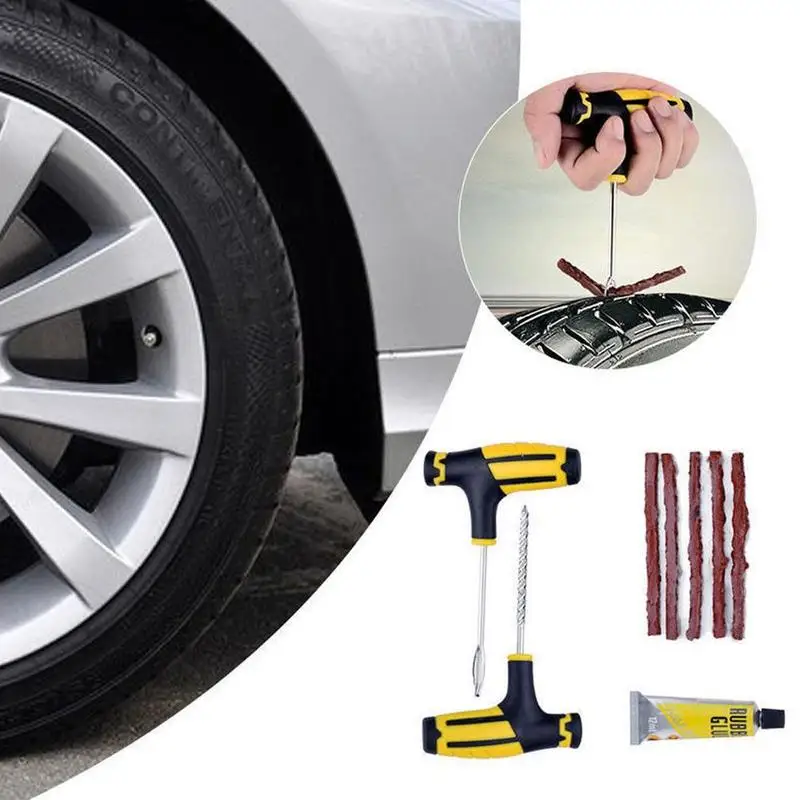 Masters can put cord patches even in the tread area. But only on condition that the distance from the sidewall to the swelling is more than 40 mm. If less, the tire is not subject to further operation. By the way, on low-profile tires, hernias, for the most part, are not repairable - both on the tread and on the sidewalls.
Masters can put cord patches even in the tread area. But only on condition that the distance from the sidewall to the swelling is more than 40 mm. If less, the tire is not subject to further operation. By the way, on low-profile tires, hernias, for the most part, are not repairable - both on the tread and on the sidewalls.
One of the major tire problems is caused by unprofessional repairs. Moreover, the owner most often does not know about it. We are talking about damage to the bead ring, as a result of which the tire does not initially hold the specified pressure.
Eventually the bead ring begins to push out of the rim. At high speed or under heavy load, such a wheel can be disassembled, which again threatens the car with a loss of control.
This damage can be repaired provided that the wire ring or base is not damaged. Special technologies for such repairs are not provided, but experienced craftsmen use the so-called "cold" or chemical vulcanization using a two-component sealant. The resulting mass covers places where there is no rubber on the bead ring. The main condition is to wait three days before mounting the tire on the disc.
The resulting mass covers places where there is no rubber on the bead ring. The main condition is to wait three days before mounting the tire on the disc.
As for Run Flat tires, according to the instructions of most manufacturers, they cannot be repaired. In extreme cases, you can use a bottle of special pressurized sealant that comes as a repair kit.
Comment of the expert of the company "SHINSERVICE":
Alexander Golubev
expert "SHINSERVICE"
First of all, we recall that most tire manufacturers do not recognize handicraft tire repair. It is considered a sign of external influence and changes in the design of the tire. Such a tire automatically voids the warranty. This does not happen if tire repairs are carried out in specialized, authorized tire brands services. Note that almost all major tire brands give their own extended warranty, according to which in most cases the repair is free, at a discount, or the product is generally replaced with a similar one, depending on the conditions of the program.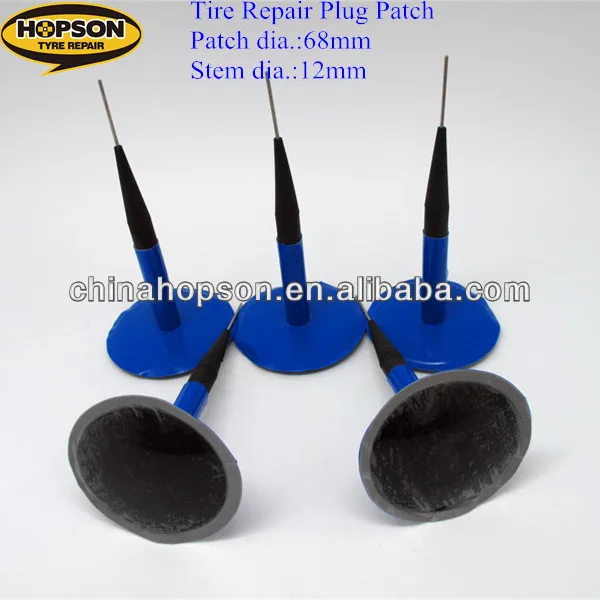
Based on our experience, we can say that in most cases damage in the bead area and in the shoulder area is not repairable.
I would also like to draw your attention to the fact that most low-profile tires have high speed indexes (V and above), and even after professional repair they will not be able to operate in the same modes without restrictions. Therefore, we strongly recommend changing the tire in all cases, except for tread punctures.
practice tires and wheels
Articles / New cars So that's what you are, Moskvich 3: getting acquainted with the car at the official start of production Yesterday, November 23, the Moscow Automobile Plant, which for a long time existed only in the status of a Renault Russia enterprise (until 2014 it was called Avtoframos) and stood idle for more than six months after the.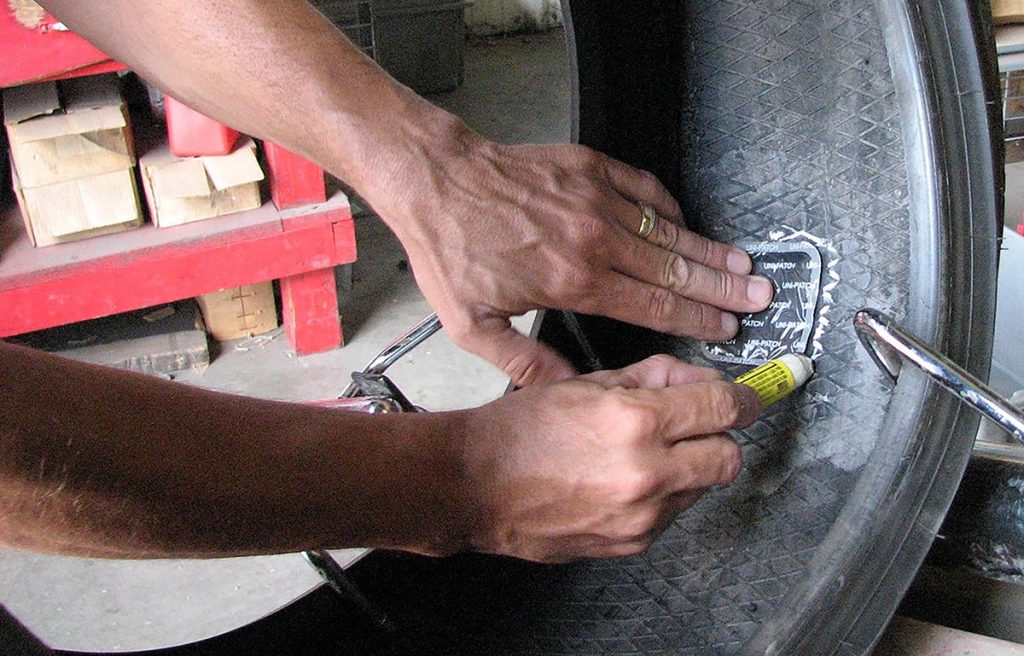 .. 2346 four 2 11/24/2022
.. 2346 four 2 11/24/2022
Articles / Practice What are universal, repair and sports catalysts and is it worth installing them Among the many promotional offers for removing the catalyst, there are others: in them, motorists are offered not a simple removal of the catalyst, but its replacement with a universal, repair one ... 920 0 one 11/23/2022
Articles / Practice Do I need to warm up the car before driving in winter: we understand in detail In my personal rating of debatable and provocative topics, the articles “how to warm up a car in winter” take an honorable first place in terms of the number of absurdities, mistakes and other shortcomings.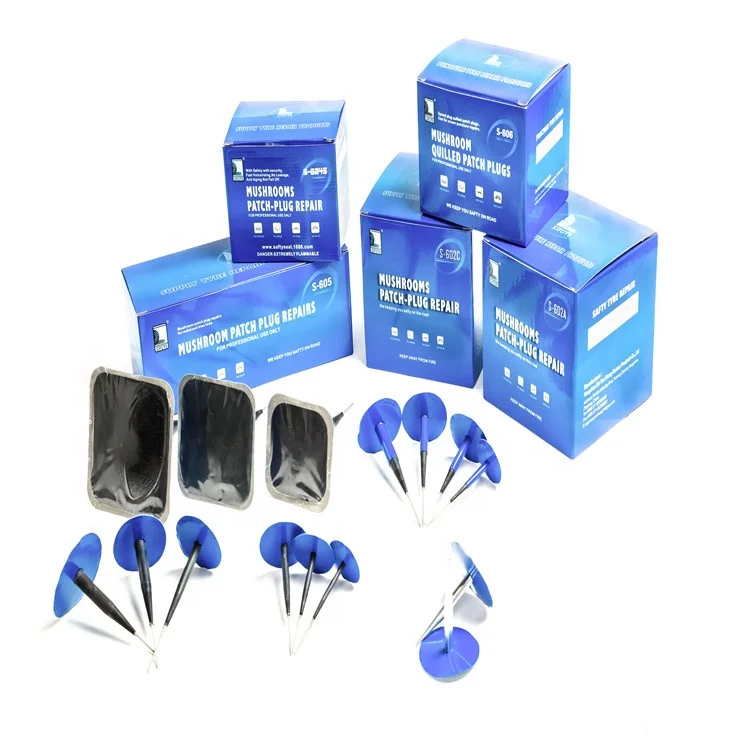 T... 2658 one 3 11/22/2022
T... 2658 one 3 11/22/2022
Test drives / Test drive Haval Dargo vs Mitsubishi Outlander: the dog is barking, the stranger is coming In the Haval dealership in the south of Moscow, life is in full swing: buyers look at cars, communicate with managers and sign some papers. While I was waiting for the test Dargo, the same cross... 17381 7 205 13.09.2022
Test drives / Test drive Motor from Mercedes, emblem from Renault, assembly from Dacia: test drive of the European Logan 1.0 It would seem that what's new can be told about the second generation Renault Logan, known to every Russian taxi driver, as they say, up and down? However, this car has.